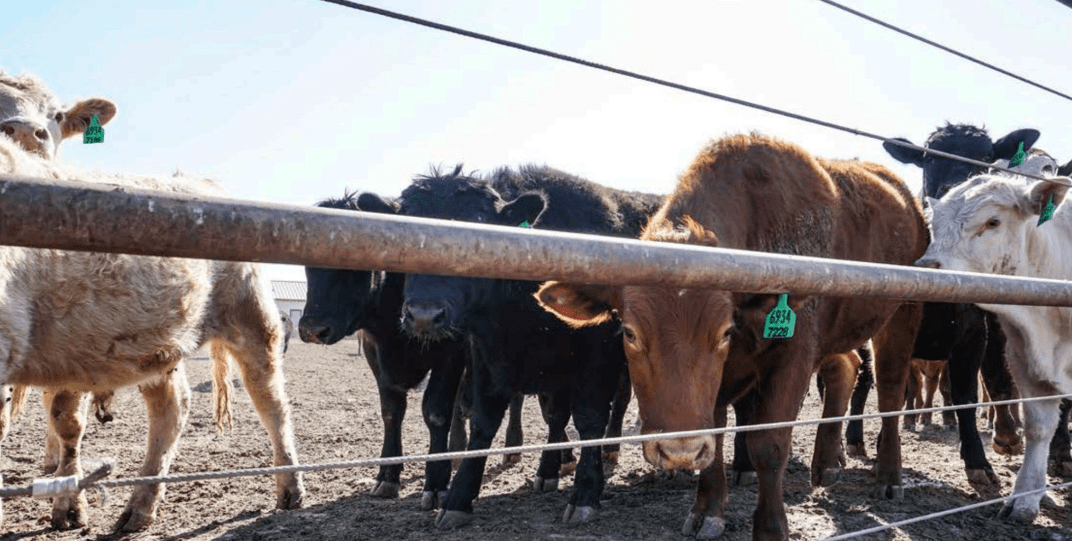


Cattle Producers put a great deal of emphasis on prevention of disease in all sectors of production. Proper nutrition, cattle handling, deworming, and vaccinations, if appropriately implemented and managed, can help them maintain a low disease rate.
One of the primary advantages cattle producers have is the ability to reduce disease transmission by having cattle on pastures, in small grass traps, or in large feedyards pens.
One of the disadvantages is the inability to control additive stress due to dust, hot and cold temperature fluctuations, or excessive moisture.
These conditions occur seasonally in feedyards and can result in an increase disease, which requires an elevation in daily health interventions or “pulls” (Figures 1A, 1B). No matter how hard we try or how well we execute prevention programs, disease is present.
Managing cattle as they go to the treatment area or hospital and back to their home pen has become increasingly important, as time is valuable, and costs are increasing.

The hospital environment can create nosocomial infections, or those infections contracted or transmitted while in a hospital setting and are caused by organisms that are potentially resistant to antibiotics.
This is one reason veterinarians may make the recommendation to recover certain cattle in the home pen rather than in a traditional hospital pen recovery system, or at a minimum, limit their stay in a hospital environment.
When we consider the most important aspects of hospital pen management for those cattle that are not robust enough to go home, we focus on the following:

Hydration status is one of the most important parameters to monitor to help improve outcomes, as water is the most important nutrient for cells to heal and have normal function.
When cattle succumb to a virus or bacteria, creating disease, their immune system typically signals a fever which can change their drinking pattern and increase their requirement for water, resulting in dehydration.
Dehydrated cattle can struggle with organ function and immune status, and they cannot withstand extreme environmental stressors, such as cold or hot temperatures. The most successful hospital systems focus on providing access to free choice water and clean their water systems daily.
Proper feeding is paramount to provide the nutrients for sick cattle to properly heal. As cattle get sick and change their eating and drinking patterns, they are not able to compete at the home pen bunk.
Fever and the reduction in feed intake can alter their nutrient absorption resulting in weight loss. As we treat cattle with antibiotics to help their immune systems catch up and fight disease, we also create a situation where the good bacteria in the digestive system can be altered, making it even more critical that we provide long-stem hay and a balanced total mixed ration.
It is recommended to maintain low competition at the water tank and feed bunk while cattle recover in hospital pens, and make sure fresh feed and hay are available 24 hours per day. Correct population density for hospital pens, as described below in the facility design and sanitation is critical to optimize rest and recovery.
As veterinarians, we teach caregivers the power of observation, attention to detail, and discovering early abnormal clinical signs of disease so they can arrive at the appropriate diagnoses.
Training and educating caregivers to make good decisions, both in the pen and chute-side (Figure 2), is an important component of hospital management for achieving favorable outcomes.
One of the primary ways PAC veterinarians evaluate disease severity is by training caregivers to develop an accurate case definition (Figure 3). An accurate case definition is accomplished by collecting a lung score, taking a temperature, performing a physical exam, and observing cattle for a treatment response.
There is a sweet spot where all four components culminate in a successful diagnosis, an appropriate treatment regimen, and the animal’s full recovery.
Both lung score and temperature are vital diagnostic tools used to develop an accurate case definition.
Hospital systems that only measure temperature develop an incomplete case definition by only measuring whether the immune system has recently recognized a virus or bacteria.
Hospitals that only collect lung scores are measuring changes in lung airflow and can effectively predict a respiratory case fatality rate percentage, but they are not defining how the immune system is reacting to disease.
Typically, we see better treatment outcomes for cattle with lung score 1 or 2 and moderate to lower temperature than for those with lung score 3, 4, or 5 and higher temperature.

Low-stress cattle handling, from the time cattle are identified as having disease until they are returned to their home pen, is also important for best outcomes.
Stress can impair immune function, which lowers antibiotic success rates and increases retreat and case fatality rates.
It can be frustrating to pull diseased cattle early with an accurate pen observation only to have them succumb to lameness or abscess, develop a seroma, or fulminate into severe septicemia due to an injury.
One way to measure cattle handling success is the monthly railer rate, which should be less than twenty-five percent of the average monthly mortality rate.
PAC veterinarians recommend using appropriate stockmanship and horsemanship principles by training cattle to voluntarily move while building trust and utilizing correct position with pressure and release techniques.

Managing hospital pens by organizing cattle into like groups is an effective way to maintain incoming and outgoing cattle flow.
One strategy for managing hospital pens is to sort cattle according to treatment date by rotating them into a series of pens, or changing their assigned pen based on which day they were treated.
This allows recognition of a post-treatment interval (PTI) and takes the guess work out of when cattle should be evaluated for going home, retreatment, or needing more time.
Another strategy is to place cattle in pens with a similar diagnosis (respiratory, AIP, chronic, lameness, or convalescence). This method requires placing a date on a treatment tag, or otherwise marking individuals with a date to manage a PTI.
Regardless of which strategy or combination of strategies is implemented, the goal when managing hospital pens is to be organized, consistent, and disciplined with evaluation and sorting.
Hospital facility design is an area not often considered when building a feedyard or expanding an established facility. It is important to evaluate the type of cattle your operation will manage by looking at risk for disease, expected seasonal pull rates, and your hospital pen daily census.
There must be enough bunk space for a minimum of 18 inches of bunk per head, and pen space to have over 250 square feet per head.
Cattle evaluation and sorting is a necessary daily activity. It requires facilities that are designed correctly and in good repair to lower stress and keep caregivers safe.
Hospital inventory is also a critical control point for maintaining appropriate head counts. Some large operations use scanning technologies with high frequency tags to help account for incoming and outgoing cattle and to maintain inventory accuracy.
Facilities should be capable of easy cleaning with good drainage and should be well maintained to improve biosecurity.
By focusing on these aspects of hospital pen management and collaborating with their veterinarians to determine the appropriate treatment and recovery system for their operation, cattle producers can have confidence they are applying best practices and having a positive impact on treatment success.
 Dr. Corbin Stevens is a founding partner of Production Animal Consultation and owner of Stevens Veterinary Services in Scott City, Kansas. His practice has a primary focus on cattle production while caring for and consulting cow-calf and feedyard operations. Dr. Stevens specializes in feedyard caregiver education, diagnostics, field research, and clinical evaluation. He completed a B.S. degree from Kansas State University College of Agriculture in 1997, a Doctor of Veterinary Medicine degree from Kansas State University in 1999, and was an associate in a mixed practice prior to starting Stevens Veterinary Services in 2004. He and his wife, Heidi, have four children: Makaela, Sawyer, Brinlie, and Ella.
Dr. Corbin Stevens is a founding partner of Production Animal Consultation and owner of Stevens Veterinary Services in Scott City, Kansas. His practice has a primary focus on cattle production while caring for and consulting cow-calf and feedyard operations. Dr. Stevens specializes in feedyard caregiver education, diagnostics, field research, and clinical evaluation. He completed a B.S. degree from Kansas State University College of Agriculture in 1997, a Doctor of Veterinary Medicine degree from Kansas State University in 1999, and was an associate in a mixed practice prior to starting Stevens Veterinary Services in 2004. He and his wife, Heidi, have four children: Makaela, Sawyer, Brinlie, and Ella.
Get all Doc Talk episodes straight to your email inbox!